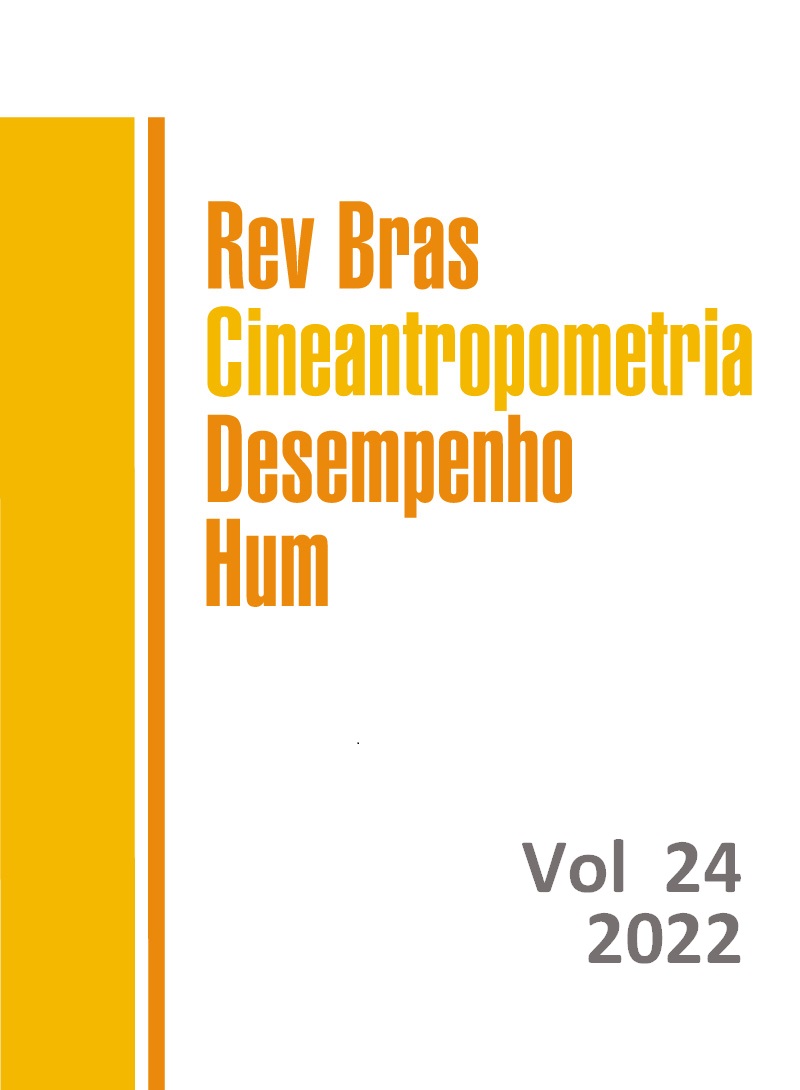Obesogenic clusters: excess body weight-related lifestyle behaviors in schoolchildren
DOI:
https://doi.org/10.1590/1980-0037.2022v24e82910Keywords:
Overweight, Obesity, Health promotion, Health behaviorAbstract
The objective of the study was to identify the existence of clusters in multiple lifestyle behaviors, including fruits/vegetables intake, sweetened products/soft drinks intake, sleep duration, physical activity and sedentary behavior. In sequence, the association between identified clusters and excess body weight in schoolchildren was examined. This was a cross-sectional school-based epidemiological study with approximately 17 thousand schoolchildren aged 4-20 years who participated in the Parana Health Project. Questionnaire was applied with structured questions to collect lifestyle behaviors. Excess body weight was identified through body mass index. Cluster analysis was performed to identify sex-specific clusters of multiple lifestyle behaviors. Analysis of covariance and logistic regression were used to analyze associations between clusters and excess body weight. Five clusters were identified in both sexes. Schoolchildren in the cluster characterized by lower fruits/vegetables intake and greater time spent in sedentary behavior showed close to twice the chance of having excess body weight compared to their peers in the reference cluster (girls: OR=1.98 [1.41-2.93]; boys: OR=1.94 [1.39-3.01]). In the case of schoolchildren in the cluster characterized by high sweetened products/soft drinks intake and shorter sleep duration, the chances of having excess body weight were 69% in girls (OR=1.69 [1.23-2.67]) and 73% in boys (OR=1.73 [1.25-2.91]). In conclusion, high fruits/vegetables intake, low sweetened products/soft drinks intake, longer sleep duration and less sedentary behavior was considered the most effective combination for maintaining a healthy body weight in the sample of schoolchildren.
References
NCD Risk Factor Collaboration (NCD-RisC). Worldwide trends in body-mass index, underweight, overweight, and obesity from 1975 to 2016: a pooled analysis of 2416 population-based measurement studies in 128·9 million children, adolescents, and adults. Lancet 2017; 390(10113):2627-42.
Kumar S, Kelly AS. Review of childhood obesity: from epidemiology, etiology, and comorbidities to clinical assessment and treatment. Mayo Clin Proc 2017; 92(2):251-65.
Pietrobelli A, Espinoza MC, De Cristofaro P. Childhood obesity: looking into the future. Angiology 2008; 59 (2 Suppl):30S-3S.
Ward ZJ, Long MW, Resch SC, Giles CM, Cradock AL, Gortmaker SL. Simulation of growth trajectories of childhood obesity into adulthood. N Engl J Med 2017; 377(22):2145-53.
Minaker L, Hammond D. Low frequency of fruit and vegetable consumption among Canadian youth: findings from the 2012/2013 Youth Smoking Survey. J Sch Health 2016; 86(2):135-42.
Hills AP, King NA, Armstrong TP. The contribution of physical activity and sedentary behaviours to the growth and development of children and adolescents: implications for overweight and obesity. Sports Med 2007; 37(6):533-45.
Carson V, Hunter S, Kuzik N, Gray CE, Poitras VJ, Chaput JP, et al. Systematic review of sedentary behaviour and health indicators in school-aged children and youth: an update. Appl Physiol Nutr Metab 2016; 41(suppl 3):S240-65S.
Felso R, Lohner S, Hollódy K, Erhardt É, Molnár D. Relationship between sleep duration and childhood obesity: systematic review including the potential underlying mechanisms. Nutr Metab Cardiovasc Dis 2017; 27(9):751-61.
Leech RM, McNaughton SA, Timperio A. The clustering of diet, physical activity and sedentary behavior in children and adolescents: a review. Int J Behav Nutr Phys Act 2014;11:4.
D'Souza NJ, Kuswara K, Zheng M, Leech R, Downing KL, Lioret S, et al. A systematic review of lifestyle patterns and their association with adiposity in children aged 5-12 years. Obes Rev 2020; 21(8):e13029.
Guedes DP, Desidera RA, Gonçalves HR. Prevalence of excessive screen time and associated correlates in Brazilian schoolchildren. Rev Bras Ativ Fis Saude 2018; 23:e0003.
WHO. World Health Organization. Physical status: the use and interpretation of anthropometry. Report of a WHO Expert Committee. [Technical Report Series n° 854]. Geneva: WHO. 1995.
Cole TJ, Lobstein T. Extended international (IOTF) body mass index cut-offs for thinness, overweight and obesity. Pediatr Obes 2012; 7(4):284-94.
Associação Brasileira de Empresas de Pesquisa – ABEP. Critério de Classificação Econômica Brasil. São Paulo: Associação Brasileira de Empresas de Pesquisa. 2014.
Guedes DP, Lopes CC. Validation of the Brazilian version of the 2007 Youth Risk Behavior Survey. Rev Saúde Pública 2010; 44(5):840-50.
Guedes DP, Guedes JERP. Measuring physical activity in Brazilian youth: reproducibility and validity of the PAQ-C and PAQ-A. Rev Bras Med Esporte 2015; 21(6):425-32.
Ottevaere C, Huybrechts I, Benser J, De Bourdeaudhuij I, Cuenca-Garcia M, Dallongeville J et al. Clustering patterns of physical activity, sedentary and dietary behavior among European adolescents: The HELENA study. BMC Public Health 2011; 11:328.
Landsberg B, Plachta-Danielzik S, Lange D, Johannsen M, Seiberl J, Muller MJ. Clustering of lifestyle factors and association with overweight in adolescents of the Kiel Obesity Prevention Study. Public Health Nutr 2010; 13(10A):1708-15.
Craggs C, Corder K, van Sluijs EM, Griffin SJ. Determinants of change in physical activity in children and adolescents: a systematic review. Am J Prev Med 2011; 40(6):645-58.
Sabbe D, De Bourdeaudhuij I, Legiest E, Maes L. A cluster-analytical approach towards physical activity and eating habits among 10-year-old children. Health Educ Res 2008; 23(5):753-62.
Santaliestra-Pasías AM, Mouratidou T, Reisch L, Pigeot I, Ahrens W, Marild S, et al. Clustering of lifestyle behaviours and relation to body composition in European Children. The IDEFICS study. Eur J Clin Nutr 2015; 69(7):811-6.
De Bourdeaudhuij I, van Oost P. A cluster-analytical approach toward physical activity and other health related behaviors. Med Sci Sports Exerc 1999; 31(4):605-12.
Driskell MM, Dyment S, Mauriello L, Castle P, Sherman K. Relationships among multiple behaviors for childhood and adolescent obesity prevention. Prev Med 2008; 46(3):209-15.
Santaliestra-Pasías AM, Mouratidou T, Verbestel V, Huybrechts I, Gottrand F, Le Donne C, et al. Food consumption and screen-based sedentary behaviors in European adolescents: the HELENA study. Arch Pediatr Adolesc Med 2012; 166(11):1010-20.
Proctor MH, Moore LL, Gao D, Cupples LA, Bradlee ML, Hood MY, et al. Television viewing and change in body fat from preschool to early adolescence: the Framingham Children's Study. Int J Obes Relat Metab Disord 2003; 27(7):827-33.



